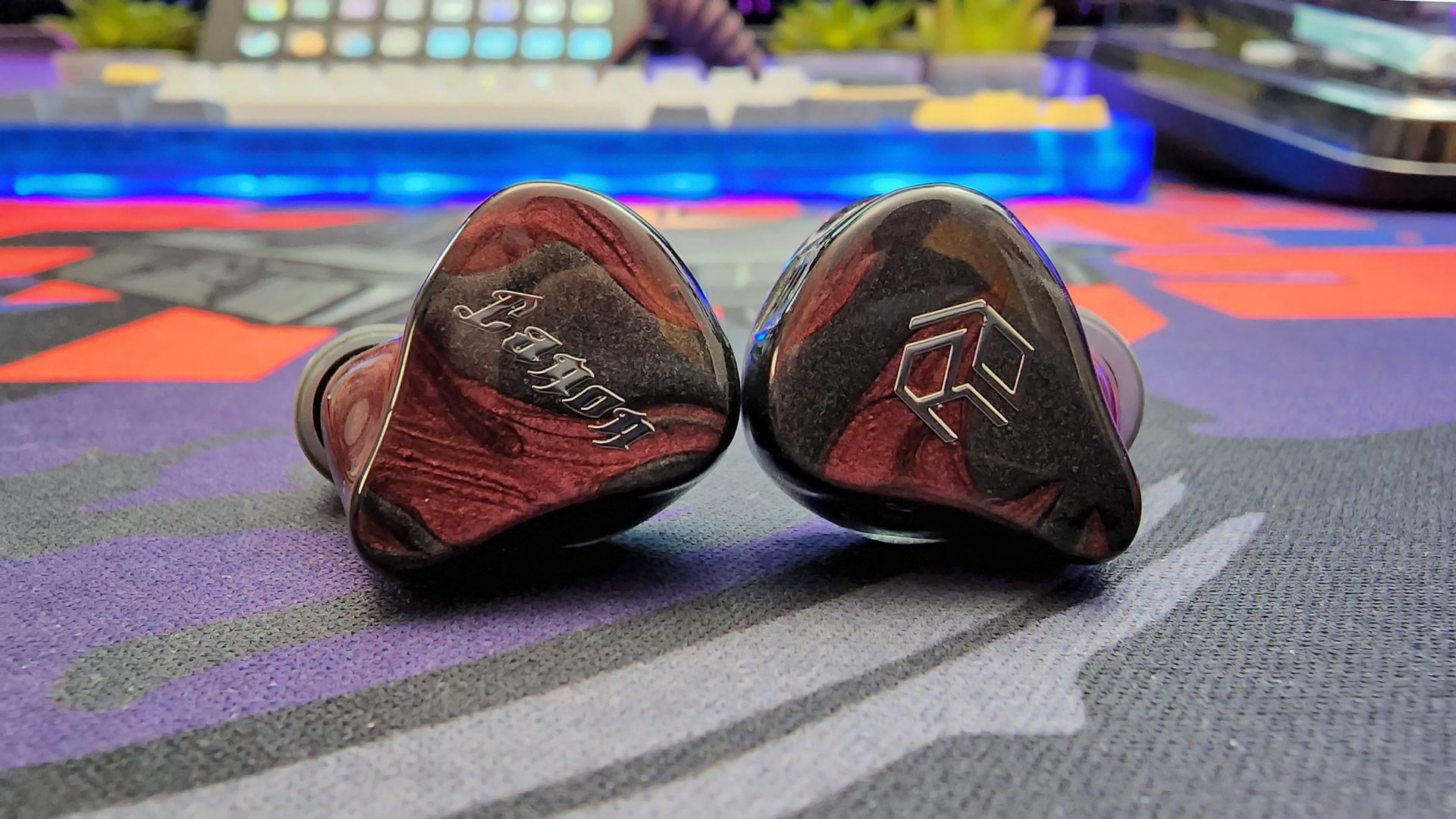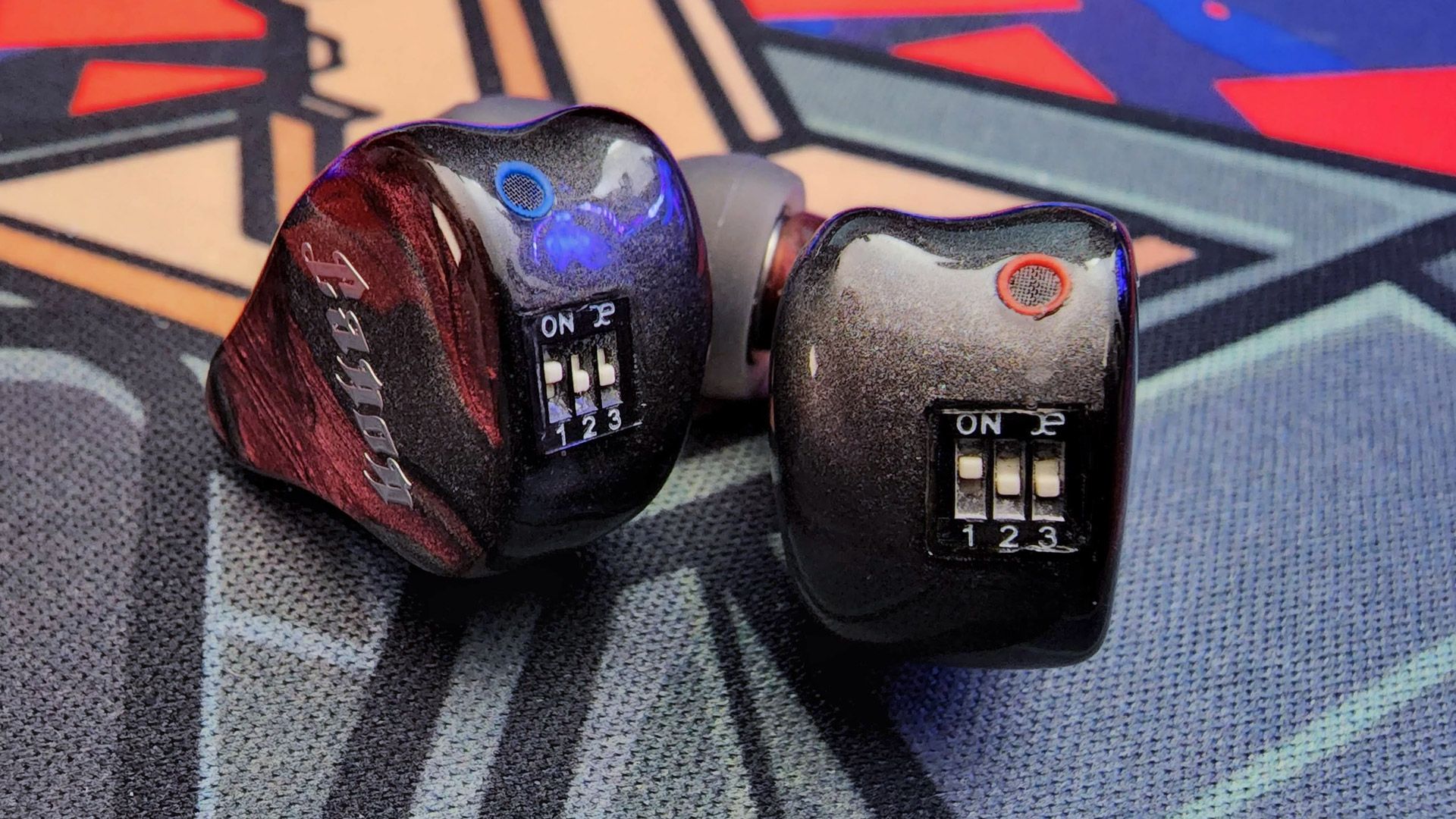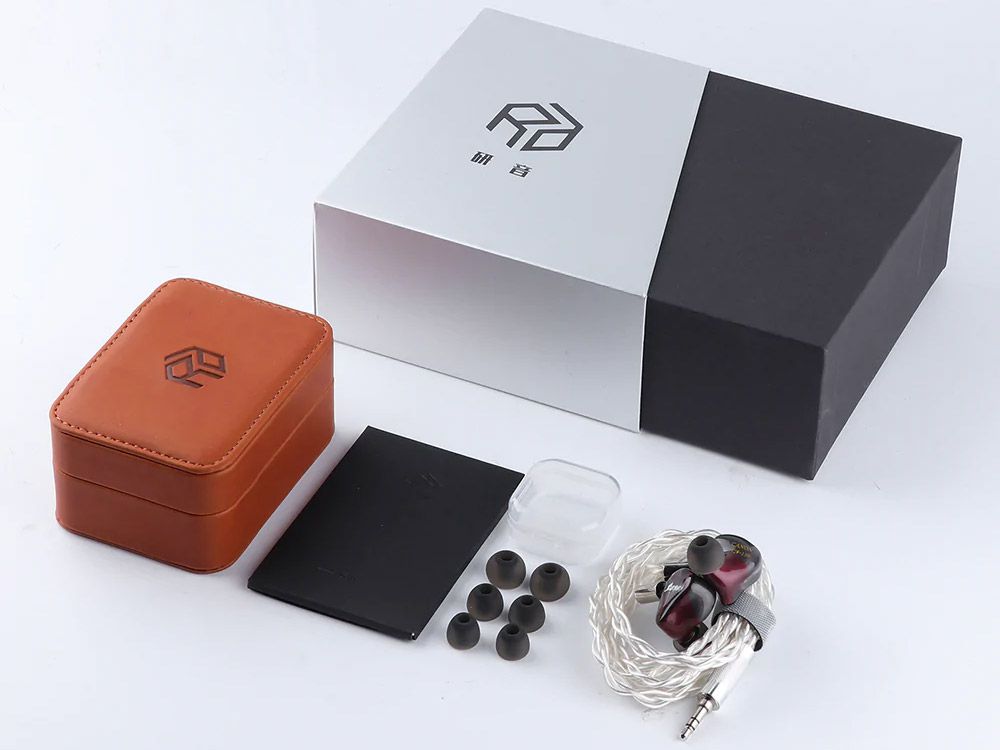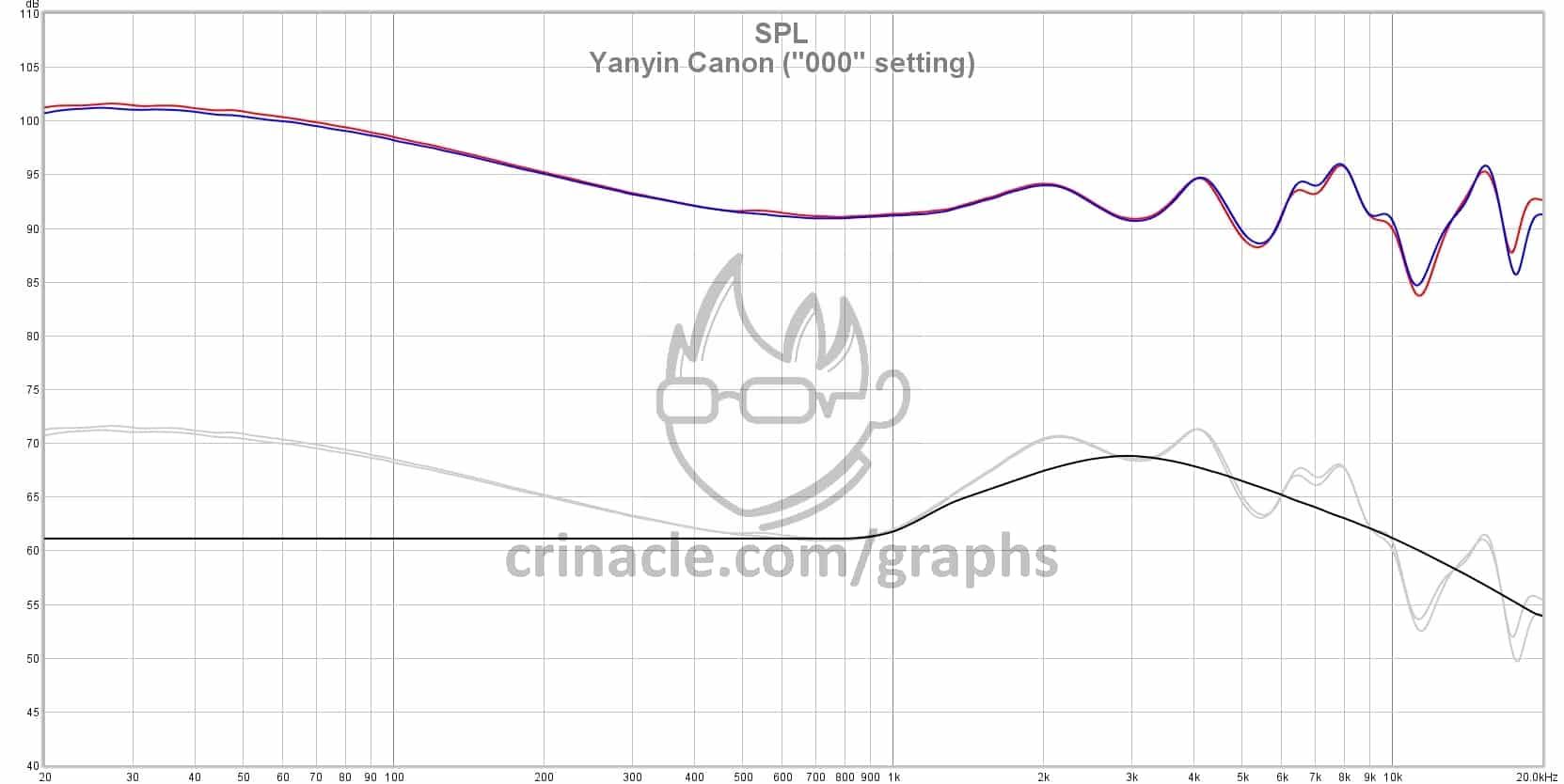
When it comes to hybrid IEMs around $350, most audio fans are quick to recommend the Mangird Tea 2. But while that IEM has quietly been gaining traction, a newer company has released its own take on the mid-tier hybrid IEM. That company is Yanyin. It gained quite a bit of kudos for its prior Aladdin IEM, an earphone that’s become a quiet hit in the ChiFi community.
This summer, it released its successor, the Canon. Featuring four balanced armatures and one dynamic driver, tuning switches that meaningfully change the sound, a deep ergonomic fit, and a high quality cable. Does it have what it takes to dethrone the Tea 2 in this price bracket — and how does it sound for music and games? Find out in this review!
We would like to thank Linsoul for providing the sample for this review.
Specifications
- Current Price: $349.99 (Amazon)
- Driver: 1 dynamic + 4 balanced armature
- Material: Hand-made earphone shell of medical resin
- Frequency response range: 5Hz-22kHz
- Input sensitivity: 108dB
- DRC: 10 ohm
- Cable: 4 strands of graphite powder single crystal copper silver-plated cable
- Pin: 0.78mm detachable cable design
Yanyin Canon – What Is It?
The Yanyin Canon is a hybrid in-ear monitor (IEM) designed to deliver audiophile grade sound with a fun and energetic tuning. If you’re not already deep into the world of HiFi, “hybrid,” means that the IEM uses multiple driver types within the same shell. In this case, the Canon uses one dynamic driver and four balanced armatures, the same type of tiny transducer used in hearing aids.
A common question is what the benefit is of having that many drivers in an IEM. That varies between models, but in the case of the Canon, those five drivers are paired with an electronic component called a crossover. The crossover splits the frequency bad into three sections and directs those drivers to produce sound only for their specific part. In this case, the dynamic driver handles the low frequencies and lower mids, while the BAs cover the mids and treble.

The benefit is that each driver is able to be tuned just for the frequencies its covering. It gives the sound engineers tighter control over the final tuning, and gives you much more of an assurance that none of the drivers are being pushed beyond their limits. Constraining the frequencies for each driver means that the sound produced by each should be high quality and free of any distortion.
This space is highly competitive, and there are lots of IEMs that incorporate dynamic drivers, balanced armatures, and even other drivers into their driver setup. A dynamic/BA combination has a unique sound that often sounds quite crisp to the ear. The top hybrid IEMs give you the best of all worlds: tight, textured bass, detailed mids, and airy treble. The Canon comes to market with lots of other IEMs with similar configurations and certainly has something to prove to earn its keep.
Yanyin gets it right with the design of the IEM. The Canon uses an ergonomic universal IEM shape. It’s medium-sized to accommodate its five drivers per side. Its shells are made of medical-grade resin to ward off discomfort. The nozzles are fairly long, allowing them to secure in the ear canal and be balanced on the outer ear. It’s a traditional design, but Yanyin earns points for a pretty striking red and black shell design.

Around the rear of the IEM, you’ll find a set of three tuning switches that can be used to add volume to the bass, mids, and highs. There have been many earphones with similar switches at this point, and usually you can ignore them, but that’s not the case here. Flipping these switches noticeably boosts that register, allowing you to add bass, raise vocals, or bring out treble detail without having to turn to an equalizer. Yanyin has the best implementation of such a system that I’ve seen yet, so they deserve kudos for turning this system from forgettable to essential (and great!).

Included in the box, you have a small assortment of accessories, as well as the cable. The earphones come inside the case, which is a similar faux leather box we’ve seen on other IEMs. In the opposite chamber is the documentation, a VIP support card, a SIM tool used for flipping the switches, and pairs of small, medium, and large ear tips.

Before moving onto fit, it’s worth taking a closer look at the cable. It is a four core copper cable plated in silver. It’s fairly soft and lost its packaging memory with a few days of use. The cable uses reinforced metal ends for durability and is terminated in a 3.5mm single-ended connection. Since it connects to the earphones with a standard 2-pin connection, swapping it out for an upgrade is fast and easy.
Yanyin Canon – Fit and Comfort
In keeping with the number of drivers they use, the Canons are mid-sized earphones and stick out of the ear slightly. They have a fairly deep insertion depth and fit very securely with the proper tips. If you’re used to short fit nozzles, give yourself time to adjust to the deeper fit. It’s likely that you’ll experience discomfort in the beginning.
Because of the longer nozzles, it is especially important to find the right tips to match your ear. While the pre-installed medium tip worked well for my right ear, I had to switch to a small in my left to avoid discomfort. Once they were fit, I found them to be quite comfortable, but since Yanyin has included a limited selection of tips in the box, it’s possible you may need to look elsewhere if the three sizes don’t work for you.
Yanyin Canon – Listening Impressions
For this review, I conducted most of my listening using Spotify set to the Very High preset. The Canon’s are very easy to drive, so I primarily used my CX-Pro dongle DAC. This affordable dongle is able to get them loud enough to be painful at only 70 out of 150 volume on my Samsung Galaxy S22 Ultra, making them one of the most sensitive IEMs I have tested this year. You can run this on just about anything without fear of missing sound potential.
Unlike most earphones I’ve tried with tuning switches, the Canon’s actually make a noticeable difference. As you read my, and others, impressions bear in mind that enabling a switch boosts that register 3dB or so, so you can tune to match your preference without turning to EQ, at least to a moderate degree. The impressions below are with all the switches off (stock tuning) unless otherwise noted.
Bass: Bass performance is impressive. The Canons reach low and have nice rumble on the sub-bass and punch in the mid-bass. Listening to G.O.A.T. by Polyphia, the low-end was full and rich, the way it’s intended to be. Right Side of the Bed by Atreyu is another example of the bass guitar being forward to fill out the body and punchy kick drums adding exclamation marks throughout the song. This set is great for electronic music, metal, hip-hop and other genres that really leverage the bass.
This is even more true with the bass switch flipped. The Canons become bass cannons with that switch enabled and are very fun. While it warms the sound, it stays in its own lane and doesn’t bloat into the mid-range.
Detail in this spectrum isn’t as present as the Mangird Tea 2s but is no slouch. Since there is more bass, you feel it more (especially sub-bass movement), but texture is slightly hazy.
For gaming, the bass performance is top-notch. You’ll feel every explosion and sweeping cinematic score.
 Image Credit: Crinacle (visit Crin’s site to see graphs of other switch settings)
Image Credit: Crinacle (visit Crin’s site to see graphs of other switch settings)
Mids: Mids sound great on this set. By default, they’re stepped back a bit, but are rich with details. Vocals in particular sound great here. They’re full of warmth and realism. I did enable this switch to raise the volume of vocals more, and the set is improved with it.
The mid-range performance is my favorite quality of this set, after the bass. Acoustic guitars have just enough edge to cut through and sparkle on top of tracks. Strings sing with an almost liquid quality (that also applies to electric guitar solos).
For gaming, you’ll have no trouble hearing footsteps and whether they’re coming from left, right, or center. See more about this in the imaging section.
Treble: Treble is tame but well extended. Cymbals have realistic decay and the presence and timbre allow overtones of guitars and pianos to come forward and sound natural and true to life. There is a reasonable amount of air, but these aren’t particularly spacious earphones. I didn’t pick up on any sharpness or sibilance. Overall, treble is less remarkable to my ear but fits into the overall sound of the earphones well.
Soundstage/Imaging: The soundstage on this set is only average. Music and game audio seems to come from right outside the ear instead of inside it. I would recommend enabling spatial audio for any kind of gaming.
Imaging is also only decent. There is clear stereo separation and good layering of sounds, so you can clearly hear every instrument and audio cue, but they feel a bit compressed, left and center. The Mangird Tea 2 have an advantage overall in both soundstage and imaging.
While the Canons will work fine for gaming, it’s not the best choice due to the above qualities.

Overall Impressions and Final Thoughts
Overall, I think Yanyin has developed a very compelling set here and it deserves more attention. It competes well with the Mangird Tea 2, but even though the Tea 2 has better technical performance and detail retrieval, I prefer the Canon more. At the end of the day, it comes down to tuning. The stock tuning is good on its own, but the switches really push this into Great territory. Using those switches, I was able to enjoy all of the bass and also push vocals forward. In this configuration, they have a much funner sound than the Tea 2s, which makes its shortcomings less meaningful as a daily driver. It’s flat out more enjoyable, which makes me more likely to carry it every day.
At $349, it’s expensive and placed toe-to-toe with the Tea 2. Because of the trade-offs, I don’t think I can say with confidence that either is the better IEM. Instead, go with the Yanyin Canon if you want lots of bass and a fun, every day sound. Go with the Tea 2 if you’d rather have more details and better technicalities.
The product described in this article was provided by the manufacturer for evaluation purposes. Articles may include affiliate links from which we may earn a small commission to help support the site. Authors do not earn affiliate revenue or commissions.










